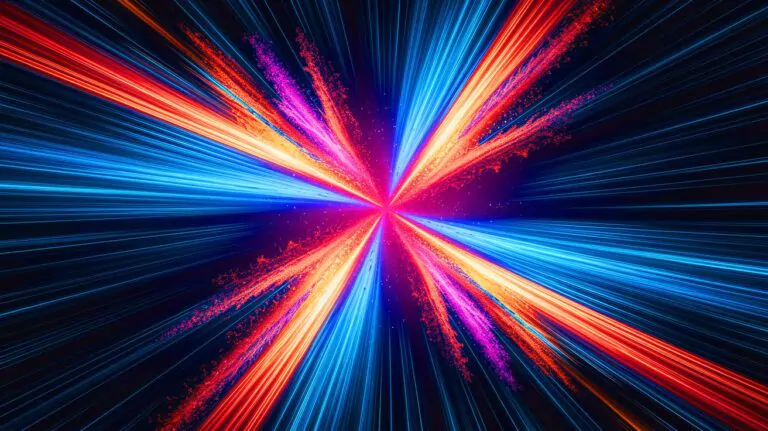| IN A NUTSHELL |
|
The mysteries of the universe have long captivated scientists and enthusiasts alike, with cosmic rays standing out as one of the most intriguing phenomena. These high-energy particles, constantly bombarding Earth, originate from some of the universe’s most extreme events. Yet, despite their prevalence, their origins and the mechanisms behind their acceleration remain elusive. Recent breakthroughs from the University of Science and Technology of China (USTC) offer new insights into this cosmic enigma. By recreating space-like conditions in a laboratory setting, researchers have made significant strides in understanding how these particles gain their immense energy.
Understanding Cosmic Rays and Their Impact
Cosmic rays are high-energy particles that travel through space at nearly the speed of light. These particles are linked to powerful cosmic events such as supernovae and the environments surrounding black holes. They play a critical role in atmospheric chemistry and can interfere with electronic systems on Earth, posing challenges for astronauts and spacecraft. Despite their significance, studying cosmic rays has been notoriously difficult. The primary challenge lies in identifying how these particles attain such high energies. This puzzle has driven researchers to explore various theories and conduct experiments to unravel the mysteries of cosmic ray acceleration.
Shock Drift vs. Shock Surfing: Competing Theories
To explain how cosmic rays achieve their high energies, scientists have developed two primary theories: Shock Drift Acceleration (SDA) and Shock Surfing Acceleration (SSA). SDA suggests that particles gain energy by sliding along magnetic fields at the edge of a shock wave, akin to a surfer riding a wave’s side. As particles interact with the shock’s electric and magnetic fields, they receive a speed boost. On the other hand, SSA posits that particles become trapped at the shock wave’s crest, where the electric field propels them forward, resulting in a sudden energy burst. Despite significant research, the scientific community has yet to determine which theory accurately explains cosmic ray acceleration.
Recreating Space Conditions in the Lab
The USTC team adopted a novel approach to test these theories by using the Shenguang-II laser facility to simulate space-like conditions. They generated a magnetized plasma, a charged state of matter resembling conditions found in space, and then propelled another plasma into it at speeds exceeding 240 miles per second. This collision created shock waves similar to those generated by supernovae. Advanced diagnostic tools allowed researchers to observe ion behavior during this interaction. They witnessed ions accelerating to speeds between 683 and 1,118 miles per second, significantly faster than the initial shock wave. Simulations confirmed that this energy gain was driven by the electric and magnetic fields of the shock wave, highlighting shock drift acceleration (SDA) as the dominant mechanism.
The Implications of These Findings
This groundbreaking experiment resolves a longstanding debate in astrophysics, providing a platform for studying high-energy particle dynamics in a controlled setting. The results align with satellite observations in the Earth’s bow shock, enhancing the credibility of shock drift acceleration as a key mechanism in cosmic ray energization. The study’s publication in Science Advances marks a significant milestone in our understanding of cosmic phenomena. These insights pave the way for future research to explore particle physics and cosmology further, potentially uncovering new mysteries of the universe. As scientists build on these findings, the quest to decode the cosmos continues, promising more exciting discoveries ahead.
The quest to understand cosmic rays and their origins is far from over. The recent findings from USTC have opened new avenues for exploration, shedding light on the acceleration mechanisms of these high-energy particles. As researchers delve deeper into the mysteries of the universe, one can’t help but wonder: What other cosmic secrets await discovery in the vast expanses of space?
Did you like it? 4.5/5 (24)








Wow, 1,118 miles per second? That’s mind-blowing! 🚀
Is it just me, or does “Deep Space Terror” sound like a movie title? 🎬
How does this simulation impact our understanding of cosmic rays?
Are there any practical applications for this research, or is it purely theoretical?
China’s making waves in space research—quite literally this time! 🌌
This seems like a huge leap in astrophysics. Kudos to the USTC team! 🎉